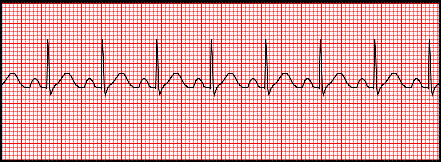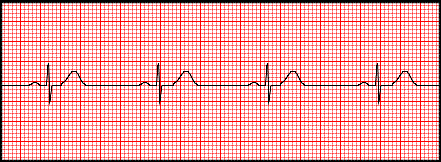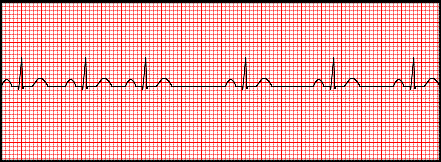
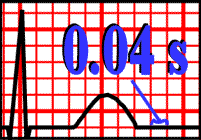
An ECG is printed on paper covered with a grid of squares. Notice that five small squares on the paper form a larger square. The width of a single small square on ECG paper represents 0.04 seconds. To successfully interpret ECGs, you must have this value committed to memory. Do this now. If each small square represents 0.04 seconds, then a second will be 25 small squares across. If you print out a minute's worth of your heart's electrical activity, the paper would be 1500 small squares wide. If something on an ECG is, let's say, 12 small squares in width, that means that it lasted 12 x 0.04, or almost half a second. A common length of an ECG printout is 6 seconds; this is known as a "six second strip."


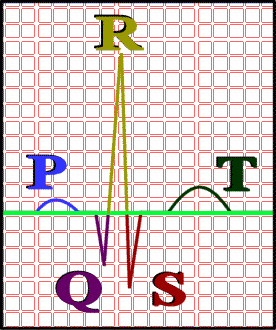 |
The first little hump is known as the P wave. It occurs when the atria depolarize (i.e. trigger).
|

Each one of the figures represents an ECG pattern displaying three types of abnormal rhythms: Tachycardia, Bradycardia, and Arrhymthmia. Identify each.
